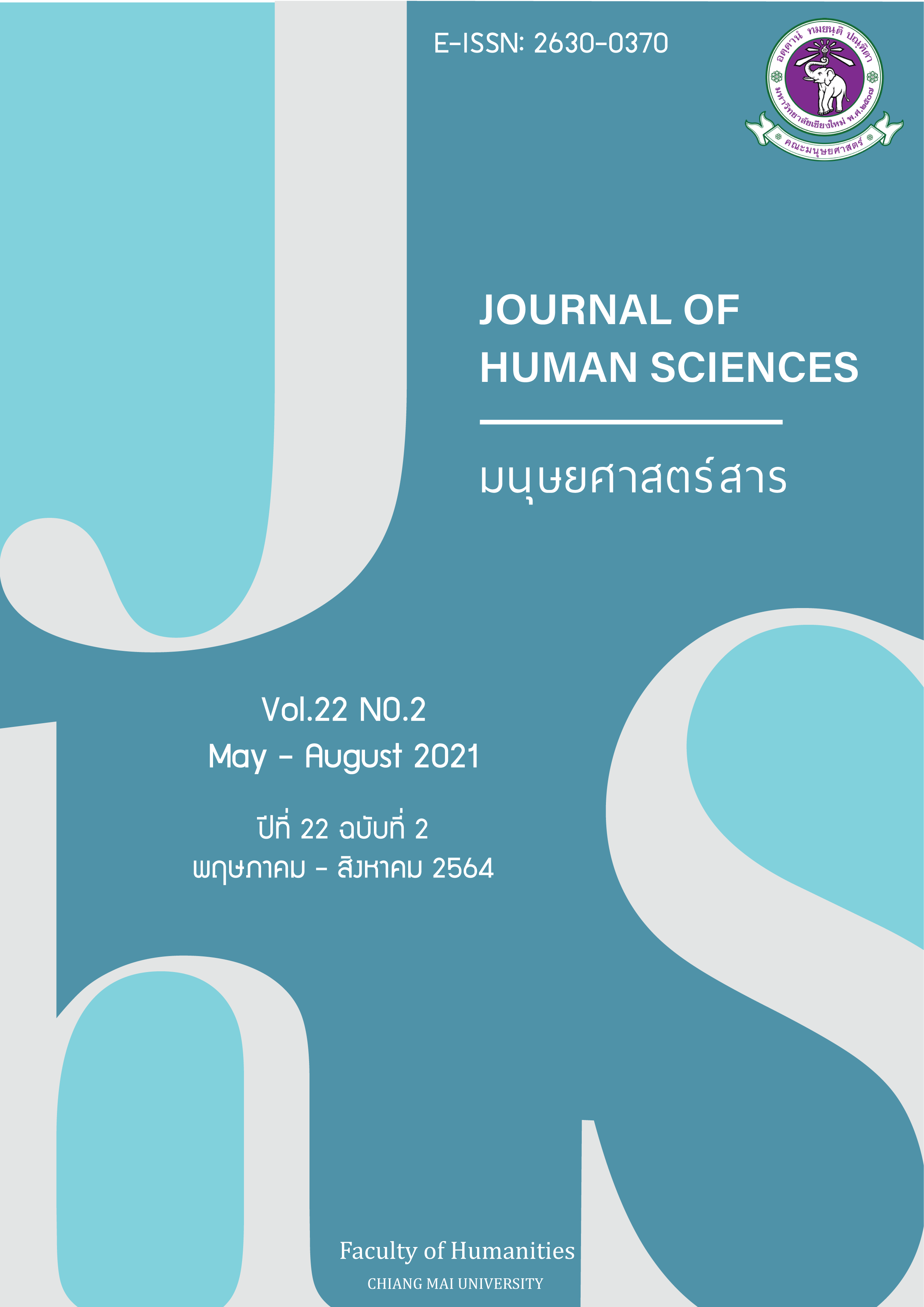อัตลักษณ์กลุ่มชาติพันธุ์ อำเภออู่ทอง จังหวัดสุพรรณบุรี
Main Article Content
บทคัดย่อ
การศึกษาอัตลักษณ์กลุ่มชาติพันธุ์ อำเภออู่ทอง จังหวัดสุพรรณบุรี มีวัตถุประสงค์เพื่อ 1) สำรวจข้อมูลเกี่ยวกับอัตลักษณ์ของกลุ่มชาติพันธุ์ลาวโซ่ง ลาวเวียง ลาวครั่ง และไทยพื้นถิ่นและไทยพื้นถิ่น 2) เปรียบเทียบและจำแนกอัตลักษณ์ของกลุ่มชาติพันธุ์ 3) แนวทางการอนุรักษ์และสืบทอดอัตลักษณ์ทางวัฒนธรรมของกลุ่มชาติพันธุ์ และ 4) ศึกษาความต้องการของชาติพันธุ์ในการเชื่อมโยงอัตลักษณ์ของกลุ่มชาติพันธุ์กับการพัฒนาผลิตภัณฑ์นวัตกรรมให้สอดคล้องกับความต้องการของตลาด โดยการสัมภาษณ์และจัดสนทนากลุ่มสมาชิกแต่ละชาติพันธุ์เกี่ยวกับลักษณะเฉพาะด้านภาษา การแต่งกาย อาหารการกิน ที่อยู่อาศัย ประเพณีและพิธีกรรม ผลการวิจัยพบว่า ลาวโซ่งหรือไทยทรงดำมีอัตลักษณ์ที่โดดเด่นคือการแต่งกายและลายผ้าทอ ลาวเวียงและลาวครั่งมีอัตลักษณ์คล้ายคลึงกันคือการแต่งกาย ผู้หญิงนุ่งผ้าซิ่นตีนจก แต่ขาดอัตลักษณ์ของลายผ้าที่แตกต่างจากชาติพันธุ์อื่น ส่วนไทยพื้นถิ่นเป็นคนไทยโดยกำเนิดที่จังหวัดสุพรรณบุรี มีอัตลักษณ์ด้านภาษาคือสำเนียงพูดเหน่อ ส่วนแนวทางการอนุรักษ์และสืบทอดอัตลักษณ์ทางวัฒนธรรมของกลุ่มชาติพันธุ์ คือการสร้างความตระหนักรู้ในคุณค่าของวัฒนธรรมในกลุ่มชาติพันธุ์ ผู้นำกลุ่มหรือผู้นำชุมชนมีบทบาทสำคัญอย่างยิ่ง และจำเป็นต้องได้รับการสนับสนุนจากหน่วยงานภายนอก ส่วนความต้องการของชาติพันธุ์ในการเชื่อมโยงอัตลักษณ์ของผ้าทอกับการพัฒนาผลิตภัณฑ์นวัตกรรมให้สอดคล้องกับความต้องการของตลาด สมาชิกของกลุ่มชาติพันธุ์ลาวโซ่ง ลาวเวียง ลาวครั่งและไทยพื้นถิ่นต้องการพัฒนากระเป๋าที่มีประโยชน์หลากหลายและสื่ออัตลักษณ์ชาติพันธุ์ได้ แต่ชาติพันธุ์ลาวเวียง ลาวครั่งและไทยพื้นถิ่นยังขาดอัตลักษณ์ของผ้าทอ จึงเป็นอุปสรรคในการพัฒนาผลิตภัณฑ์นวัตกรรม
Article Details
เอกสารอ้างอิง
Boonyasatit, W., Paintham, C., & Silapabanleng, T. (2017). The Historical Development of Lao Wiang People in U Thong District, Suphanburi Province. Journal of Nakhonratchasima College, 11(1). 26-38.
Burke, P. J., & Reitzes, D. C. (1991). An identity theory approach to commitment. Social Psychology Quarterly, 54(3). 239–251.
Chuenchat, P. (2007). The Literature Works of Female Authors in the Early Rattanakosin Period: A Study of Concepts Presentation Techniques, and Identity (master’s thesis). Bangkok: Kasetsart University.
Dowduen, C. (2015). Development and Design of Ladies’ Bags with Traditional Textile Patterns form Ban Pa Tang, Uthai Thani Province. Art and Architecture Journal Naresuan University, 6(1). 121-133. Retrieved from https://so01.tci-thaijo.org/index. php/ajnu/article/view/35967/29875
Feungfusakul, A. (2008). Identity. Bangkok: National Research Council of Thailand.
Fishman, A. J. (2003). Handbook of Language and Ethnic Identity: Disciplinary and Regional Perspectives. (Volume 1) (Disciplinary & Regional Perspectives) 2nd Edition. Retrieved from https://www.researchgate.net/publication/227537519_Handbook_of_Language _and_Ethnic_Identity
Hall, S. (1990). Cultural identity and diaspora. In P. Williams & L. Chrisman (Eds.), Colonial Discourse and Postcolonial Theory: A Reader (pp. 392-403). New York: Columbia UP.
Janpla, J., Songsuwong, W., Kijkar, P., & Wongsaming, S. (2016). Development of Thai Song Dam Woven Fabric Products to Add Value Following the Creative Economy Concept. Veridian E-Journal,Silpakorn University, 9(2), 82-98. Retrieved from https://he02.tci-thaijo.org/index.php/Veridian-E-Journal/article/view /61543/50706
Khunphol. S. (2015). A Study of Cultural Identity in Beliefs of Kohyor Community . Parichart Journal, 28(3). 82-103.
Kovathanakul, D. (2016). The Mekong Ethnic Groups Tourism Development, based on the Authenticity, to Support ASEAN Tourism Plan (research report). Thailand Science Research and Innovation.
Leepreecha, P. (2004). Identity of Mong Ethnic Creation and inheritance in Identity Discourse. Bangkok: OA Printing House.
McNair, L. D., Newswander, C., Boden, D. & Borrego, M. (2011). Student and faculty interdisciplinary identity in self-management teams. Journal of Engineering Education. 100(2). 374-396.
Numbang, K., & Siriwong, P. (2017). The existence of “Tinjok” weaver wisdom of Laotian lineage Thai (Lao Khrang) Ban Sa Bua Kam Amphoe Dan Chang Changwat Suphanburi. Journal of Humanities and Social Sciences Mahasarakham University, 35(6), 50-59, Retrieved from http://www.kmutt.ac.th/jif/public_html/article_detail. php?ArticleID=186784
Pongnak, I. & Disatapunahu S. (2015). The Community Identity of the Ancient Yown of U-thong, Suphanburi Province. Veridian E-journal, Silapakorn University, 8(3). Retrieved from https://he02.tci-thaijo.org/index.php/Veridian-E-Journal/article/view /43701/36134
Ramitanon, Chalatchai. (2007). Identity, culture, and change. Retrieved March 10, 2562, from http://wsc.soc.cmu.ac.th/womancenter/report_upload/0.21523100-15338271 30.pdf
Stryker, Sheldon. (2007). Identity Theory and Personality Theory: Mutual Relevance. Retrieved from https://doi.org/10.1111/j.1467-6494.2007.00468.x
Tancharoen, S. (2017). The Study of Potential for Community Wisdom Product Development of U-thong District in Suphanburi Province (Research Report). Bangkok: The Thailand Research Fund
Twichasri, V. (2014). Identity of Community: Concept and Management for Sustainable Tourism by Buddhist Peaceful Means of Chaingkhan Municipality, Lei Province. Journal of Arts Management, 1(2), 63-74.
Wechwongse, D. (2011). The Identity Presenting Process of Yuan Ethnicity in the Context of Tourism through a Local Museum and Riverside Market. Academic Services Journal, 22(3), 130-149.


